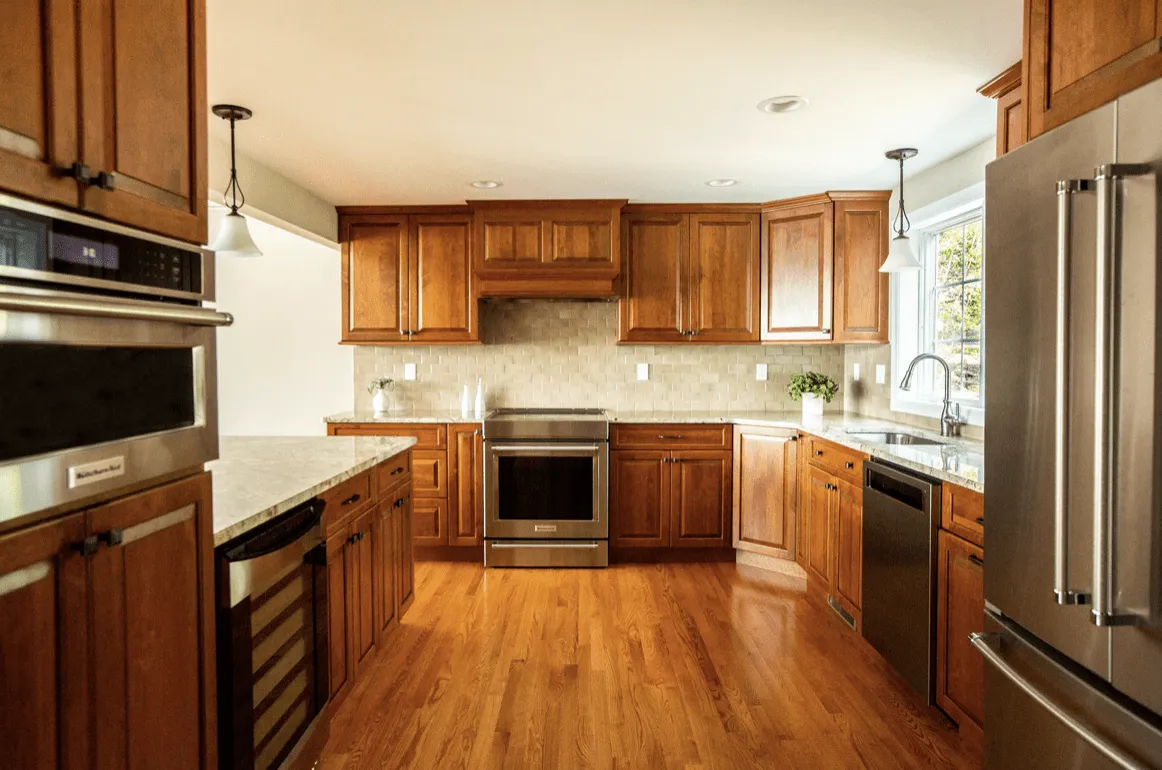
How to Stain Kitchen Cabinets: A Step-by-Step Guide
Are your kitchen cabinets looking a little worn out and in need of a makeover? Staining your kitchen cabinets can be a fantastic way to breathe new life into your kitchen space. Not only does it enhance the aesthetic appeal, but it also protects the wood from wear and tear. In this comprehensive guide, we’ll walk you through the entire process of staining kitchen cabinets, from cost considerations to step-by-step instructions. Let’s get started!
How to Stain Kitchen Cabinets
Staining kitchen cabinets is a rewarding DIY project that can be accomplished with some time, effort, and the right materials. Here’s a step-by-step guide to help you achieve beautiful, professionally stained cabinets:
Step 1: Gather Your Supplies
Before you start, make sure you have all the necessary supplies on hand. You’ll need:
- Sandpaper (various grits)
- Screwdriver
- Wood filler
- Tack cloth
- Stain and sealant
- Brushes and rags
- Drop cloths
- Painter’s tape
Step 2: Remove Cabinet Hardware
Begin by removing all cabinet hardware, including knobs, handles, and hinges. This will make the staining process easier and ensure a smoother finish.
Step 3: Clean and Sand
Thoroughly clean the cabinets with a mixture of water and mild detergent. Once they’re dry, use sandpaper to sand the surfaces, removing any existing finish or imperfections. Start with a coarse grit and gradually move to finer grits for a smooth surface.
Step 4: Fill Imperfections
Inspect the cabinets for any holes or dents. Use wood filler to fill in these imperfections, then sand the area once more for a seamless look.
Step 5: Apply Stain
Now comes the fun part! Apply the stain using a brush or cloth, following the wood grain for an even finish. Allow it to dry according to the manufacturer’s instructions.
See more: What to Use to Clean Kitchen Cabinets Before Painting
Step 6: Seal the Cabinets
To protect your cabinets and enhance their longevity, apply a sealant. This will also give your cabinets a beautiful, glossy finish. Allow the sealant to dry completely before reattaching the hardware.
Step 7: Reassemble
Once everything is dry and the cabinets look stunning, reattach the hardware, and your kitchen will have a fresh new look!
Interesting Facts about Staining Kitchen Cabinets
| Fact | Description |
|---|---|
| 1. Cabinet Preparation | Proper preparation, including cleaning and sanding, is crucial before staining to ensure a smooth and even finish. |
| 2. Stain Types | There are various types of stains, such as oil-based and water-based stains, each offering different finishes and application methods. |
| 3. Wood Characteristics | The type of wood used for cabinets affects how it absorbs the stain, influencing the final color and appearance. |
| 4. Testing on a Small Area | Before applying the stain to the entire cabinet, it’s recommended to test it on a small, inconspicuous area to ensure the desired color is achieved. |
| 5. Sealant Application | Applying a sealant or topcoat after staining protects the cabinets and enhances the longevity of the finish. |
How Much Does It Cost to Stain Kitchen Cabinets?
The cost of staining kitchen cabinets can vary widely depending on several factors:
- Size of the Kitchen: A larger kitchen will naturally require more stain and sealant, which will increase the cost.
- Quality of Stain: Higher-quality stains and sealants may cost more upfront but can result in a more durable and attractive finish.
- DIY vs. Professional: Doing it yourself can save money on labor costs, but hiring a professional ensures a flawless finish.
- Cabinet Condition: If your cabinets require extensive repairs or prep work, this can increase the overall cost.
On average, a DIY project can cost anywhere from $100 to $500, while hiring a professional can range from $1,000 to $5,000 or more.
FAQs
Q1: How much does it cost to stain kitchen cabinets professionally?
Hiring a professional can cost anywhere from $1,000 to $5,000, depending on factors like kitchen size and the quality of materials used.
Q2: Can I stain over existing cabinet stain?
Yes, you can stain over existing stain, but it’s essential to properly prepare the surface by cleaning and sanding it.
Q3: How long does it take to stain kitchen cabinets?
Staining kitchen cabinets typically takes a few days, including drying time. It’s essential to follow the manufacturer’s instructions for drying times between coats.
Q4: Can I change the cabinet color with staining?
Staining can darken or enhance the existing color of your cabinets, but it may not drastically change the color.
Q5: What’s the difference between staining and painting kitchen cabinets?
Staining enhances the natural wood grain, while painting covers it completely. Both options have their own unique benefits and aesthetics.
conclusion
In this comprehensive guide on how to stain kitchen cabinets, we explored the cost factors involved, including how much it costs to stain kitchen cabinets professionally or as a DIY project. We also provide step-by-step instructions on the staining process. Additionally, we cover how to gel stain kitchen cabinets for a unique look and offer tips on how to touch up stain kitchen cabinets for maintenance. Whether you’re considering the expenses or the techniques involved, this article has you covered.
Staining your kitchen cabinets can be a cost-effective way to transform your kitchen’s appearance. Whether you choose to DIY or hire a professional, following the steps mentioned above will help you achieve beautiful, stained cabinets that will enhance the overall look of your kitchen. So, roll up your sleeves and get ready to enjoy your newly revitalized kitchen space!